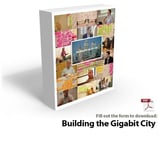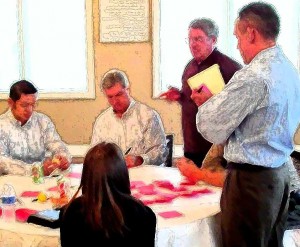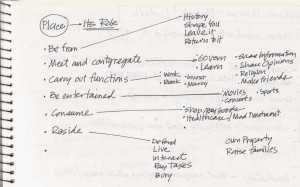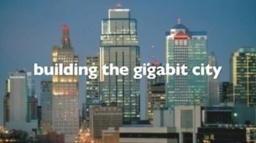Following up our work on Google Fiber in Kansas City, one idea that’s received great attention is a virtual time capsule that would allow 3-D, holographic recording of people visiting Kansas City landmarks, videoing their experiences and recollections. The video experiences would be available for download and viewing as part of a catalog of Kansas City’s history and people. What is incredible is future generations could actually see and experience Kansas City as an ancestor they might have never met experienced it years before. It’s the one idea that when discussed at the end of our Google Fiber brainstorming session actually took my breath away. That’s always a strong sign it could be a great idea with big possibilities.
Since then, a number of people have asked whether the virtual time capsule idea is simply intriguing or if it is a real business idea.
My answer is it’s both. It’s intriguing for a variety of reasons:
- It creates a multi-dimensional connection across generations that might never know each other.
- The virtual time capsule creates rich, shared memories for individuals, families, and the entire community.
- It provides a very different application of typical streaming video ideas that simply focus on how to deliver video faster because of Google Fiber.
Relative to the virtual time capsule being a real idea to be commercialized, there are a variety of points where it could potentially generate revenue:
- Selling hardware – the video and storage equipment behind the virtual time capsule
- Software and apps development to make the hardware work
- Fees to shoot, store, and/or watch videos
- Sales of personal hardware and apps for individuals to participate
- Subscriptions to content for institutions and individuals
- Processing and production fees for the virtual time capsule videos
Maybe not all these pan out or there are other revenue opportunities that exist, but it’s clear the virtual time capsule is a great idea that could deliver value to multiple parties.
What’s even better about this great idea is it’s already instigated a very special multi-generational video. Paula Holmquist, a participant in the live brainstorming session (and someone who the incredible story of our meeting two days before the brainstorming session requires a blog post all its own), heard the idea at our report out session on November 10. The next day, Veteran’s Day, Paula took her father, a veteran of the Korean War, to Kansas City’s Korean War Veteran memorial and the Liberty Memorial, to capture his memories of his service to our country. The video is absolutely delightful, especially as Paula’s dad interacts with another veteran talking about how Navy stories grow in grandeur with each telling.
The video is even more special since Paula’s father, Robert Schweiger passed away later in November. Because of the video time capsule idea, Paula and her father captured both family and historical memories that now live on.
The video time capsule – I can’t wait to see it become a distinctive part of the Kansas City experience. - Mike Brown
 How can ultra high-speed internet speeds drive innovation? “Building the Gigabit City: Brainzooming a Google Fiber Roadmap,” a free 120-page report, shares 60 business opportunities for driving innovation and hundreds of ideas for education, healthcare, jobs, community activities, and more. Download this exclusive Google Fiber report sponsored by Social Media Club of Kansas City and The Brainzooming Group addressing how ultra high-speed internet can spur economic development, growth, and improved lifestyles globally.
How can ultra high-speed internet speeds drive innovation? “Building the Gigabit City: Brainzooming a Google Fiber Roadmap,” a free 120-page report, shares 60 business opportunities for driving innovation and hundreds of ideas for education, healthcare, jobs, community activities, and more. Download this exclusive Google Fiber report sponsored by Social Media Club of Kansas City and The Brainzooming Group addressing how ultra high-speed internet can spur economic development, growth, and improved lifestyles globally.



